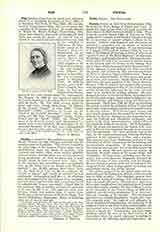

Pisidia, a country in the southwestern part of Asia Minor, between the high Phrygian tableland and the maritime plain of Pamphilia. This district, formed by the lofty ridges of the western Taurus range, was in pre-Christian times the abode of stalwart, half-civilized, and unruly tribes, never entirely subdued. Ancient writers describe them as a restless, plunder-loving population. St. Paul, no doubt, had in mind Pisidia, which he had traversed twice (Acts, xiii, 13-14: note here that, according to the more probable text, in the latter verse we should read “Pisidian Antioch“; xiv, 20-23), perhaps three times (Acts, xvi, 6), when in II Cor., xi, 26, he mentions the “perils of waters” and “perils of robbers” he had confronted. Independent until 36 B.C. the Pisidians were then conquered by the Galatian king, Amyntas, and soon after, together with their conquerors, forced to acknowledge Roman suzerainty. Joined first to one province, then to another, it received a governor of its own in 297 A.D. The principal cities were Cremna, Adada (the modern name of which, Kara Bavlo, preserves the memory of St. Paul), Serge, Termessos, Pednalissos, Sagalassos. Heaps of imposing ruins are all that is now left.
CHARLES L. SOUVAY

